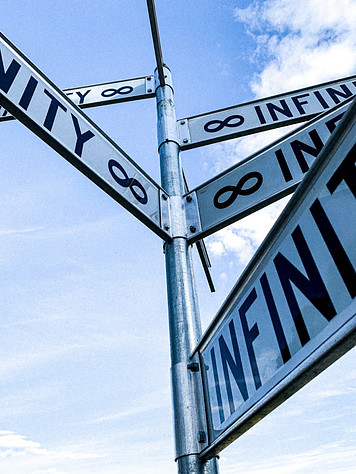Mass is not infinite. We know that. But what is the meaning of infinity time, and what is the meaning of infinity space? Does the world exist?
What Is the Meaning of Infinity?
I believe that the world exists. If so, is it finite or infinite? The world is infinite. If the world is infinite, the question is what is infinite in it. Is there only one infinity, or is there more? Infinities cannot exist together because one excludes the other. Infinity is a quantitative determinant. So if infinities cannot coexist, there is only one infinity, and the question of its nature arises. What is infinity? What Is the Meaning of Infinity?
The whole world, reality, and matter, as it is called in physics, consists of time, space, and mass. Altogether, it is a matter. Mass is not infinite. We can already see that by the fact that mass stands out from space, and, of course, it is something different from what we call time. Is space infinite? Well no. As soon as it is spread, it has parts, and since it is divided, it is, of course, final. So the only infinity that is possible is time, and then we are faced with the enigma of three times. We have a past, a present, and a future. In human understanding, at least it seems so to us, there are three times: past, present, and future. But is that so? The past has passed, the future has not yet come, and our human experience tells us that it is always present. So the constant present is the only time of physical reality.
Are the Past and Future Only an Image?
Let’s deal with the past. What is the past? I look at the stars. The stars are in the present. I, who see them, am also in the present. And then, what is in the past? Image! The image of the stars is in the past. But in what way? The photons of which the image is composed, which therefore represent the structural units of what we call the image, are on every section of the path from the stars to me and are also in the present. So the past, or what we call the past, what we understand as the past, is just the arrangement of those photons. So the order of the photons in an image that is purely mathematical in nature, extrasensory, invisible in essence, because that is the geometry behind the scene, is not the scene itself. That is the past. So the atomic-molecular structure can never be in the past, just a picture of that structure. Therefore, there is only the present; the past is the order of the photons, not the photons themselves, and the future is the same, but it is the order of the macro system.
The Law of Synchronicity for the Electromagnetic Spectrum
Consider the electromagnetic spectrum. The electromagnetic field has its frequency, it has its wavelength, and that is what determines the present, the local present. A higher frequency or shorter wavelength than that given field is in the past. A lower frequency or longer wavelength than that given field is in the future, and that is the law of synchronicity for the electromagnetic spectrum. In other words, the present is any length, any frequency from which we begin to measure time.
The Only Time of Physical Reality Is the Present
The ontology of time, which I founded, is a new branch of European metaphysics, which understands time as a being of the world, as the basic real infinity. The past is the order of microsystems, the future is the order of macrosystems, and the only time of physical reality is the present. The only real infinity is purely temporal, and that is eternity, constantly present and constant here. Here where I stand, it is present; on Aldebaran is the present; in New Zealand is the present; across the street is present; on the Moon, it is also present. The present is everywhere, and it sustains the cosmos. Simultaneity is the basis of the existence of the real world of our experience.
The Center of the Universe Is Everywhere
If we understand this space behind as infinity, the question arises where the center of infinity is? Here it is. It is both in you and in me; it is everywhere, it is non-local, and it is everywhere because infinity consists only of centers. It has no periphery because it has no border. How many centers have infinity? There are as many as there are natural numbers, so no matter how many, n + 1. There is only one real infinity, it is purely temporal, and that is the universal present. How many infinity centers are there? There is no matter how many of them in coexistence. Infinity consists only of centers because it has no periphery. After all, it has no limit. All the centers of infinity coexist; they exist together at once. If we show the whole infinity as one center, then all its centers fall together and exist at once only as one point.
If we observe only two of all the centers of infinity, which are in coexistence, we get their relation. That relation is the radius, the radius of the sphere, because there is no preferential direction, and it forms the sphere as a part of the continuum, as a part of the infinite, as a part of the present. In fact, this is how space is created from time. Radius is a generator. It is the temporal generator of space.
Democritus believed that worlds do not have to be composed only of small atoms but can also be of massive atoms through which worlds built of small atoms pass as through empty space.